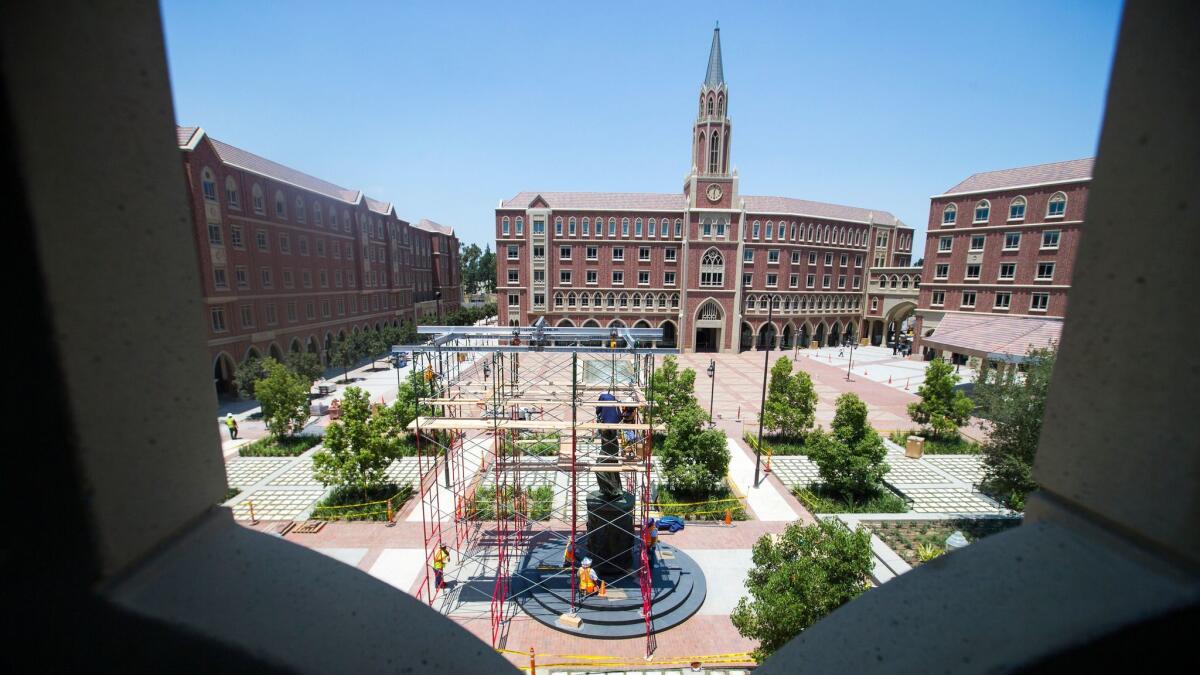Shakespeare or Shakespear? That is the question surrounding USC’s new statue in $700-million USC Village
When
Likewise, how was he to imagine that the spelling of his name would ignite a cross-town debate between two famed Los Angeles universities? Did the Bard spell his name Shakespeare or Shakespear?
That last question was asked recently when USC unveiled the new statue of Hecuba, queen of Troy, last week. The statue featured verses from “Hamlet” and the dramatist’s name, which was noticeably missing a final “e.”
The excerpt, found on the base of the 20-foot statue, reads:
“And all for nothing — For Hecuba!
What’s Hecuba to him, or he to Hecuba,
That he should weep for her?”
Shakespear’s Hamlet”
‘To E, or not to E, that is the question’
Students from USC’s longtime rival, UCLA, spotted the small, but glaring, detail and pointed it out in a tweet Monday.
“USC. The only place in America that can unveil a statue as the centerpiece of a $700 million project and manage to misspell Shakespeare,” the official student-run account, @uclatheden, tweeted.
The towering bronze statue, created by sculptor Christopher Slatoff, stands in the middle of the new development, dubbed USC Village. The complex includes six five-story buildings, student housing, a 30,000-square-foot fitness center, restaurants, a Trader Joe’s and a Target.
The 12-foot sculpture of Hecuba includes an 8-foot base that depicts six women from different ethnic backgrounds, the university said. Slatoff worked on the statue for more than two years.
Despite some criticism, USC is standing by the spelling, saying that there are variations of Shakespeare.
"To E, or not to E, that is the question,” USC said in a statement. “Over the centuries his surname has been spelled 20 different ways. USC chose an older spelling because of the ancient feel of the statue, even though it is not the most common form."

Tomato, tomahto
It looks like USC may have a point.
Caroline McManus, who teaches 17th century English literature at Cal State Los Angeles, said spelling was not standardized in English during Shakespeare’s time.
“We see Shakespeare's name spelled in different ways on documents written during his time period,” she said.
Some of those spellings include Shakespear, Shakspere and Shakespeare.
Twitter: @VeronicaRochaLA
Sign up for Essential California
The most important California stories and recommendations in your inbox every morning.
You may occasionally receive promotional content from the Los Angeles Times.






